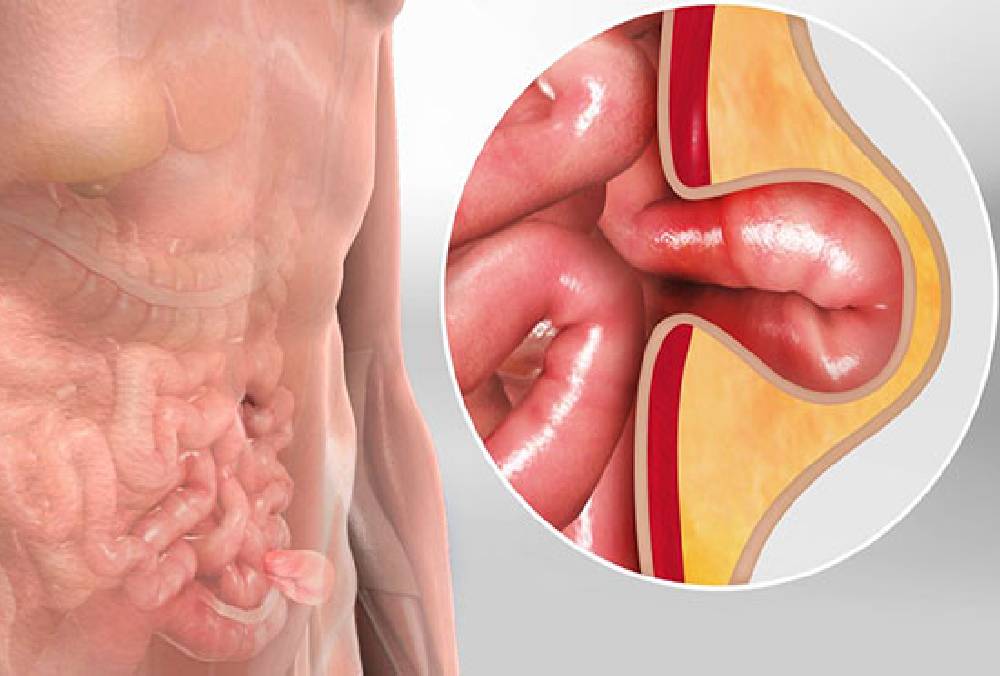Laparoscopic Hernia Repair

Overview
Laparoscopic hernia repair is a modern, minimally invasive surgical procedure used to treat hernias. A hernia occurs when an organ or tissue pushes through a weak spot in the muscle or surrounding tissue, often in the abdominal or groin area. In laparoscopic hernia repair, a surgeon makes small incisions (typically 1-2 cm in size) through which a laparoscope (a thin, flexible tube with a camera) and specialized surgical instruments are inserted to repair the hernia.
The laparoscope allows the surgeon to view the hernia and surrounding structures on a screen, ensuring precise and minimally invasive repairs. The procedure typically involves repositioning the protruding tissue and reinforcing the weakened muscle or tissue with a synthetic mesh. This method offers several benefits, including smaller scars, reduced pain, and a faster recovery compared to traditional open surgery.
The laparoscope allows the surgeon to view the hernia and surrounding structures on a screen, ensuring precise and minimally invasive repairs. The procedure typically involves repositioning the protruding tissue and reinforcing the weakened muscle or tissue with a synthetic mesh. This method offers several benefits, including smaller scars, reduced pain, and a faster recovery compared to traditional open surgery.
Causes :
A laparoscopic hernia repair is typically performed to treat a hernia, which can develop due to a variety of causes, including:
- Increased Abdominal Pressure: Factors such as heavy lifting, chronic coughing, obesity, and straining during bowel movements can lead to increased pressure in the abdomen, which may result in a hernia.
- Congenital Weakness: Some people are born with areas of weakness in their abdominal wall, making them more susceptible to developing a hernia.
- Age: As individuals age, the abdominal muscles weaken, increasing the likelihood of hernias developing.
- Injury or Trauma: Physical trauma to the abdominal wall can cause tissue to weaken, leading to a hernia.
- Previous Surgery: A history of abdominal surgery may increase the risk of developing an incisional hernia, where the weakness in the muscle wall occurs at the site of a previous surgical incision.
- Chronic Conditions: Health conditions such as chronic constipation, fluid retention, or chronic coughing can put additional pressure on the abdominal wall and contribute to the development of a hernia.
Symptoms :
Hernias may present with varying symptoms depending on their location and size. Common signs and symptoms that may indicate the need for laparoscopic hernia repair include:
- Visible Bulge: A noticeable lump or bulge in the abdomen or groin, particularly when standing, coughing, or lifting. The bulge may disappear when lying down or pushing on it.
- Pain or Discomfort: A dull ache or sharp pain around the bulge, especially during physical activity, lifting, or straining.
- Pressure or Heaviness: A sensation of pressure or heaviness in the abdomen or groin, which can worsen with physical exertion.
- Digestive Symptoms: For hiatal hernias, symptoms such as heartburn, acid reflux, or difficulty swallowing may occur.
- Nausea or Vomiting: In some cases, hernias can become strangulated, causing the trapped tissue to lose its blood supply. This can result in severe pain, nausea, and vomiting, and may require immediate medical attention.
The Approach to Laparoscopic Hernia Repair
Laparoscopic hernia repair offers a highly effective and minimally invasive approach to fixing a hernia. Here is a typical approach to the procedure:
- Preoperative Assessment: Before performing the surgery, your surgeon will assess your medical history and conduct a physical examination. Imaging tests, such as an ultrasound or CT scan, may be ordered to better understand the hernia’s size, location, and any complications.
- Anesthesia: The procedure is typically performed under general anesthesia, meaning you will be asleep and pain-free throughout the surgery.
- Surgical Procedure: The surgeon makes a few small incisions around the hernia site. Through these incisions, a laparoscope is inserted to visualize the area. The surgeon then uses small, specialized instruments to repair the hernia by repositioning the protruding tissue back into place and reinforcing the area with a mesh to prevent recurrence. This method avoids the need for large incisions, which reduces the risk of infection and complications.
- Postoperative Care: After surgery, patients are monitored for any complications and given pain management instructions. You may be able to return home on the same day as the surgery, although a short hospital stay may be required depending on your condition and the complexity of the hernia.
- Recovery: The recovery time for laparoscopic hernia repair is generally faster than that of traditional open surgery. Most patients can return to light activities within a few days and resume normal activities within 1-2 weeks, although heavy lifting and strenuous exercise should be avoided for several weeks.
Our Process for Laparoscopic Hernia Repair Treatment
we strive to provide the best possible care for our patients with hernias. Our process for laparoscopic hernia repair is designed to ensure your comfort, safety, and quick recovery:
- Consultation and Diagnosis: Your journey begins with a consultation with one of our expert surgeons, who will evaluate your symptoms, perform a thorough examination, and may recommend imaging tests to confirm the presence and type of hernia.
- Personalized Treatment Plan: After your diagnosis, we will develop a tailored treatment plan to address your specific hernia. Our surgeons will explain the laparoscopic approach, its benefits, and what you can expect from the procedure.
- Minimally Invasive Surgery: Our experienced surgeons use the latest laparoscopic techniques to perform your hernia repair with precision, minimizing the need for large incisions. This ensures less pain, reduced risk of infection, and quicker recovery.
- Comprehensive Postoperative Care: Following the procedure, our medical team will provide you with detailed instructions on pain management, wound care, and activity restrictions to ensure a smooth recovery. We will also schedule follow-up visits to monitor your progress and address any concerns.
- Long-Term Support: Our care doesn’t stop after surgery. We offer continuous follow-up care to ensure you’re healing properly and provide you with resources to help prevent hernia recurrence. Our team is always here to support you throughout your recovery process.
